
All categories
Featured selections
Trade Assurance
Buyer Central
Help Center
Get the app
Become a supplier

(626 products available)






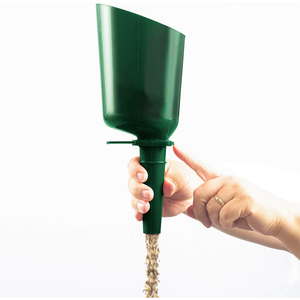
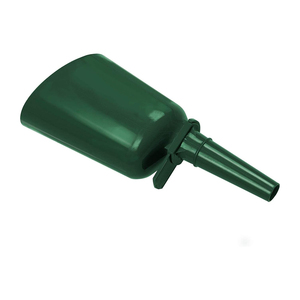
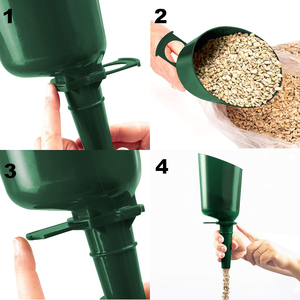
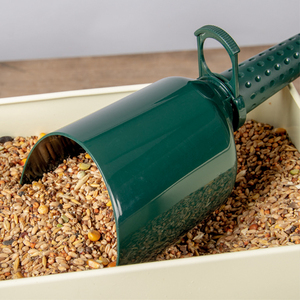
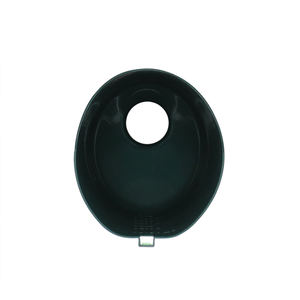










































Painted bird feeders are a fun way to attract feathered friends to the garden. There are different kinds of feeders available, each with unique features. Some popular kinds are:
Tube feeders
These feeders have a long, cylindrical body with multiple feeding ports. They're great for attracting small birds like finches, canaries, and sparrows. Tube feeders often come with mesh screens or plastic bases for easy seed access and reduced waste. They're typically made from durable plastic or metal, which helps them last a long time.
Platform feeders
Also known as ground feeders, these have a large, flat surface with raised edges. They provide an open and spacious area for many birds to eat at once. Platform feeders attract various bird species, including larger ones like jays and doves. They come in different materials, like wood, metal, or plastic, and can be mounted on poles or hung from trees.
Hopper feeders
Hopper feeders look like little birdhouses. They have a roof and sides, and the seeds are stored in the top part. As birds eat the seeds from the bottom, more seeds fall down from the top. These feeders are good for many different kinds of birds. They usually hold a lot of seeds, so the seeds last a long time. Hopper feeders are made of wood, metal, or plastic.
Suet feeders
Suet feeders are made to hold suet cakes, which are a type of bird food made from animal fat. Suet is good for birds because it gives them lots of energy, especially in the winter when it's cold. Suet feeders attract meat-eating birds like woodpeckers, nuthatches, and chickadees. Some suet feeders have cages that hold the suet cakes, and others have places where birds can sit and eat. Suet feeders are usually made from metal or wood, and it's important to keep them clean and full of fresh suet for the birds.
Window feeders
Window feeders stick to windows so people can watch the birds up close from inside their homes. These feeders attract small birds like sparrows, finches, and chickadees. They usually attach to the window using strong suction cups or hooks. Window feeders are often made of plastic or wood and have small ledges or trays for birds to stand on while they eat.
Various designs of painted bird feeders attract different birds and suit diverse aesthetic tastes and functional requirements. Understanding these painted bird feeder designs helps users select the most suitable feeder to enrich their garden or backyard avian habitat.
Tubular feeders
Tube feeders have a vertical cylindrical shape with multiple feeding ports along the tube. The ports allow different birds to feed simultaneously. The tube keeps the feed dry and fresh. Most tube feeders are made of plastic or metal, which are easy to paint and come in different colors. Tube feeders attract small birds like finches, sparrows, and chickadees. They are suitable for small spaces and can be hung or pole-mounted.
Hopper feeders
Hopper feeders have a roof and four sides, resembling a little house or hopper, hence the name. They hold a larger seed capacity, making them ideal for people who want to reduce the frequency of refilling bird feeders. Painted hopper feeders attract various birds, including cardinals, jays, and doves, and can be suspended or mounted on a pole. They are usually made of wood or metal and can be painted in various colors to enhance the visual effect.
Platform feeders
Platform feeders, also known as tray feeders, have a flat and open design, similar to a tray. They are easy for birds to access and can accommodate many birds simultaneously. Platform feeders can be placed on the ground, hung, or mounted on a pole. They attract birds of all sizes, including larger ones like pigeons and doves. Painted platform feeders are usually made of wood or plastic and can be made in various colors. However, they are more challenging to keep clean and may require more water to maintain.
Suet feeders
Suet feeders are designed to hold suet cakes or blocks, a high-energy food made from animal fat. Suet feeders attract many birds, especially during the cold season when birds require more energy. Suet feeders can be made of metal or wood and painted in various colors. There are different kinds of suet feeders, like cage-style feeders, which are made of metal wire and can be painted in various colors, and hopper-style feeders, which hold suet like a hopper feeder.
Schools and Educational Programs:
Schools are a significant place where children learn about the environment. Schools can make painted bird feeders to teach students about different birds in their area. Bird feeders also attract various birds to campuses, giving kids a chance to watch and learn about bird behavior, diets, and habitats up close. Students can keep records of the types of birds they see at the feeders. This encourages students to study wildlife more. It teaches kids the importance of caring for nature and how to protect the habitats birds need to thrive. Feeders also provide a practical way for teachers to discuss ecosystems, food chains, and conservation efforts. Class activities centered on feeders support environmental education very well.
Nursing Homes and Assisted Living Centers:
For elderly people, especially those with limited mobility, watching birds can be a great source of mental stimulation and enjoyment. Creating painted bird feeders in nursing homes provides a chance for residents to engage with wildlife from their windows or porches. Feeding birds also gives seniors an activity that helps them socialize together. It keeps them involved in a meaningful outdoor experience. Whether alone or in groups, watching different kinds of birds visit the feeders allows the elderly to connect with nature again. This low-impact hobby is good for their psychological wellbeing. It gives them purpose as they help care for creatures outside. Birdwatching has benefits for residents' moods and memories.
Community Centers and Senior Programs:
Community centers are ideal spaces for painting bird feeders as part of social programs for seniors. These centers bring together older adults who may otherwise feel isolated at home. By offering workshops where seniors can decorate feeders together, centers foster friendships among participants. Seniors get the joy of creating something meaningful while forming bonds over a shared project. The newly painted feeders can then be hung in local parks or gardens for all to enjoy. This type of outreach also gives seniors a sense of purpose. It allows them to contribute to the wider community through their artistic talents.
Hospitals and Rehabilitation Centers:
During recovery from illness or injury, patients spend long periods indoors. Hospitals can install painted bird feeders outside windows in patient rooms. This gives bedridden patients something positive to focus on during their stay. Watching healthy birds feed provides a form of mental escape that could aid healing. It offers natural stimulation when patients may be too weak for other activities. The bright colors and movements of the birds could lift patients' spirits. Birdwatching is a low-effort way to engage minds that need rest. Feeders also give patients a connection to nature, which studies show speeds up recovery. Providing visual distractions like feeders supports patient wellness.
Choosing a suitable paint bird feeder involves considering various elements to ensure it meets the needs. Here are some key points to consider:
Material of the bird feeder:
Paints like acrylics work well on feeders made of wood or metal. If the feeder is plastic, users must utilize paint specially formulated for plastic surfaces.
Type of paint:
Outdoor paints are suitable for feeders placed outside the house. They have properties that allow them to withstand different weather conditions. Choose non-toxic paints when birds eat from the feeders. Acrylic paints are often used, but ensure they are safe for wildlife.
Color of the paint:
Different colors attract different birds. For example, hummingbirds are attracted to red, while many others are repelled by it. Choose colors that will attract the types of birds one wants to see in the yard.
Durability:
Make sure the paint is durable and can withstand elements such as rain, sun, and snow. It should also be resistant to chipping and fading so that the feeder can keep its look for a long time.
Ease of application:
Some paints come ready to use with user-friendly applicators, making it simple to paint the bird feeder without much hassle or mess. Consider the ease of application when choosing a paint for the bird feeder.
Q1: What kind of paint can be used on a bird feeder?
A1: Acrylic paint is suitable for wood and metal feeders. It adheres well to the surface and provides vibrant color. Moreover, it is non-toxic and water-resistant when dried. For plastic feeders, use paint specifically made for plastic. Alternatively, choose a feeder made of paint that sticks to plastic.
Q2: Why should I use feeder paint?
A2: Feeder paint is non-toxic and safe for birds. It also sticks well to feeder surfaces and withstands weather. Using feeder paint will ensure that the bird feeders are safe and colorful.
Q3: How do I prepare the feeder before painting it?
A3: Clean the feeder by removing old seed and dirt. Wash it with soap and water, then rinse and dry it well. This will help the paint stick better.
Q4: Can I paint my bird feeder any color?
A4: Yes, but try to avoid white. Also, use bright colors that will attract birds. But not too many colors; keep it simple. Don't use dark colors on the feeder perches. It will make them think it's a danger zone. Keep the perches light-colored so the birds feel safe.
Q5: Do I need to seal the paint?
A5: A clear sealer can help protect the paint from chipping and the weather. Make sure it is bird-safe.